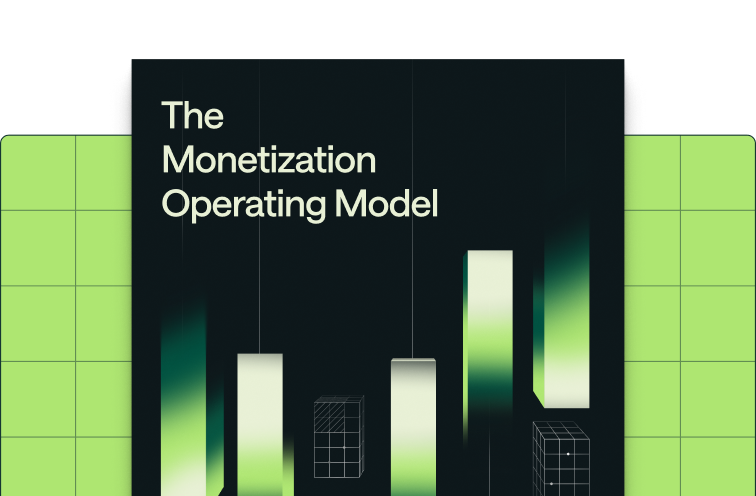Share
Until recently, most B2B software defaulted to subscriptions as the dominant pricing model
Today, successful companies are deploying multiple pricing strategies simultaneously.
They recognize that we have entered the Value Era, meaning software performs work autonomously, not just provides access to tools. This change in how software delivers work means that customers also change how they perceive software value.
And that shift comes with a need for monetization models that align with how value is both created and perceived.
Here are some examples of companies using multiple pricing models to align how they price with how customers perceive value:
- OpenAI charges by usage for their APIs, but subscriptions for ChatGPT
- Airtable offers seat-based subscriptions with AI credits per paid user, but experimented with AI add-on packs previously
- Intercom offers seat-based subscriptions for their help desk platform and outcome-based pricing for their AI agent
- Windsurf offers seat-based plans that include 500 credits per user per month, with pooled add-ons available for additional capacity
But knowing that multiple strategies exist doesn't tell you which one to deploy when. Should you add usage-based pricing to your subscription model? When does tiered pricing make sense versus flat rates? How do you price AI features differently from core platform access?
For product leaders navigating these decisions, the next sections will break down five monetization strategies operational leaders are testing in production:
- Usage-based pricing
- Hybrid subscription plus usage
- Outcome-based pricing
- Freemium with usage tiers
- Credit systems
Each approach solves different customer procurement patterns and technical constraints. Companies that get this alignment right avoid bill shock and build customer trust that compounds into lower churn and deeper expansion revenue over time.
{{widget-monetization-whitepaper}}Why product leaders need new monetization frameworks
AI is pushing product leaders to rethink pricing and develop new monetization frameworks that align pricing with actual resource consumption and value delivery.
This means understanding when to meter usage, how to figure out the right pricing model for your product, and which value metrics customers care about most.
AI-enhanced software breaks traditional pricing assumptions. When your product generates text, processes images, or runs predictions, each interaction consumes compute resources that scale with usage intensity.
In other words, a customer running 10 API calls per day has dramatically different cost implications than one running 10,000.
Unfortunately, purely traditional per-seat pricing doesn't account for this variance.
Heavy users drive up your infrastructure costs while light users subsidize them. The result is margin compression on high-usage accounts and customer frustration when bills don't match perceived value.
AI capabilities also evolve continuously. New models, expanded context windows, and enhanced features ship monthly rather than annually. Fixed pricing contracts, built using traditional, inflexible billing infrastructure, struggle to adapt to these rapid capability improvements.
These challenges force companies to either give away new functionality or delay product launches.
Without these foundations, every product update creates pricing misalignment. You either undercharge for expensive features or overcharge relative to customer value — both scenarios create competitive vulnerabilities that faster-moving companies will exploit.
How to evaluate which monetization strategy fits your product
Companies that systematically match monetization to value delivery patterns generally see higher expansion revenue because customers pay for what they actually use.
Three factors determine which monetization strategy works: customer value alignment, implementation complexity, and revenue predictability.
Test your product against these factors before building billing infrastructure or setting price points.
Match your monetization strategy to how your customers get value
Your monetization model should mirror how customers realize value from your product. AI services that consume GPU cycles on every API call carry real marginal costs—flat fees collapse when every inference costs money. Usage-based pricing keeps unit economics intact by scaling charges with consumption.
Collaboration tools deliver value through team access, not transaction volume. Subscription models work because teams pay for platform availability, not individual document edits. The value pattern determines the pricing pattern.
Understand your implementation options
Modern pricing models require real-time metering as their foundation, but they differ in what gets measured.
Usage-based models track consumption events like API calls or compute time, while outcome-based pricing measures results like tasks completed or goals achieved. Credit systems enable usage-based pricing by preallocating value such as dollars or units to customers, then tracking consumption against those balances.
The complexity of pricing models ranges from basic consumption tracking to advanced attribution and contract enforcement. As complexity increases, so do implementation timelines and engineering effort.
Consider your revenue predictability needs
Pure usage models can create revenue volatility that CFOs hate. Hybrid structures that combine subscriptions with usage components smooth cash flow while preserving expansion potential.
For example, Miro provides a predictable subscription foundation while adding AI credits that scale with new users added to the subscription.
This trend toward hybrid models reflects the need for predictable revenue with growth flexibility, both for your company and for your customers
5 monetization strategies to consider
The following five strategies represent the most common approaches product leaders are testing in production today.
Most successful companies combine elements from multiple strategies rather than committing to just one.
1. Usage-based pricing: align charges with consumption
Usage-based pricing works when your product's value and costs scale with consumption. Instead of flat subscriptions, you charge customers per API call, GPU minute, or gigabyte processed, ensuring revenue growth tracks directly with customer success.
Usage-based pricing succeeds because invoices mirror actual value delivery.
To implement usage-based pricing, first figure out how your customers get value from your product. Is it the number of API calls? Or GPU minutes?
Then, make sure you have a system that can track this value and charge your customers appropriately.
Start by testing your usage tracking system with a small group of customers or in a staging environment to ensure accuracy before rolling it out broadly. Once deployed, treat rate adjustments like product features—quick to change with proper infrastructure.
Usage-based pricing eliminates subscription mismatches—light users aren't overcharged and heavy users aren't subsidized. Customers see bills that reflect actual activity, which builds trust and encourages natural growth without contract renegotiation.
That being said, implementation requires real-time metering that tracks every billable event, systems that handle tiered pricing calculations, and customer dashboards showing usage and projected costs.
Without visibility tools, you'll face billing disputes and customer dissatisfaction.
Set initial rates based on your cost structure and competitive analysis. Once live, treat pricing adjustments as product iterations — use customer feedback and usage patterns to refine rates, but only after your billing infrastructure makes changes simple to deploy.
2. Hybrid Subscription Plus Usage: Predictable Base With Dynamic Upside
Combine fixed monthly fees with usage charges to balance predictable revenue with expansion potential. Charge a base subscription for platform access, then bill additional consumption for API calls, compute time, or data processing beyond included limits.
Microsoft Copilot uses this model: $30 per user for baseline capacity plus additional credits for usage spikes. This reduces adoption risk while capturing revenue from power users without budget renegotiation.
Implementation requires a unified billing infrastructure that meters usage in real-time and invoices both components together. Roll out to new customers first while grandfathering existing contracts until renewal.
Deploy usage dashboards immediately and set alerts when customers approach their included usage limits — for example, at 70% and 90% of included volume — to trigger expansion conversations. Track net revenue retention to measure expansion capture without relying solely on seat growth, gross margin per usage unit for profitability, and forecast accuracy by separating fixed and variable revenue streams.
3. Outcome-based pricing: charge for results delivered
Charge customers only when your product moves their business metrics — support tickets resolved, sales qualified leads generated, or documents processed. This removes adoption risk for buyers and aligns your revenue with their success.
Billing works by tracking KPIs that customers already measure in their CRM, ERP, or analytics systems. Both sides need written definitions of the metric, data source, and measurement window before signing contracts. Shared dashboards prevent billing disputes.
Implementation requires data pipelines that ingest customer data, convert it into standardized formats your system can process, and attribute changes to your product. You'll need to connect to customer systems through APIs or secure data feeds, and build analytics dashboards for transparent billing calculations.
Base your pricing on measurable business outcomes, for example, $X per qualified lead or a percentage of realized savings. Start with one high-signal metric both sides can measure reliably—"per transaction approved" for transactional products or "hours saved" for workflow automation. Validate your instrumentation captures the metric accurately before expanding to secondary metrics after the first contract cycle.
4. Freemium with usage tiers: risk-free adoption with monetized growth
Offer a perpetual free tier with usage limits, then charge for consumption above those caps. This removes adoption barriers while ensuring heavy users pay for the compute resources they consume.
Set free tier limits that showcase value without consuming expensive infrastructure. Let users experience core functionality—like AI content generation or data processing—within daily or monthly caps that demonstrate clear productivity gains before hitting paywall prompts.
Implementation requires real-time usage metering for each account, billing systems that convert usage into invoices, and in-product upgrade prompts when users reach their limits. Build a billing dashboard with transparent usage tracking that notifies users when they approach their spending caps, for example, at 80% and 100% of their limits.
Speed to value drives conversions — users who complete their first successful task within minutes convert at higher rates. Use progressive feature disclosure rather than time-limited trials: keep basic functionality free but gate compute-intensive features like batch processing or premium models.
Monitor where users stall in the conversion funnel and adjust caps, prompts, or onboarding flows through controlled experiments. Review usage telemetry weekly to optimize the balance between showcasing value and preserving gross margins on free usage.
5. Credit systems: enterprise predictability with usage flexibility
Let enterprise customers prepay for usage credits, then consume them as needed throughout the budget cycle. This gives finance teams spending certainty while preserving operational flexibility for teams that need to scale usage up or down.
Credits can solve the enterprise procurement problem: finance approves one annual purchase order with flexible payment schedules (monthly, quarterly, or annually) instead of wrestling with variable monthly invoices. Teams consume credits based on actual workload demands—API calls, compute hours, or data processing—without additional approvals.
You can also control spending by setting limits on how many credits can be used within specific time periods.
One option is using pooled credits (where X users share Y total credits across the team) for tools where consumption fluctuates across departments, or per-seat allocation when finance wants granular accountability. Both approaches decouple revenue from rigid seat counts and align charges with actual resource consumption.
Implementation requires real-time event collection, customer-level aggregation, and tracking usage against credits. Build contract-aware ledger systems with configurable burn rules, automated alerts when balances run low, and self-service dashboards for real-time balance monitoring.
Match corporate budgeting cycles rather than forcing new approval processes. Provide clear documentation on credit pricing, expiry windows, and rollover policies. When customers can track remaining balance in real-time and understand exactly which workloads consume credits, you eliminate billing surprises and create smoother renewal conversations.
Building your monetization strategy for the AI era
AI has fundamentally changed how software delivers value—from static feature access to dynamic, usage-driven outcomes. Many AI-powered products now generate value based on how intensely they’re used and the output of the work, not just whether a user has access to a tool.
Companies using access-based pricing leave revenue on the table while competitors capture market share through value-aligned models.
Start by mapping how customers create measurable value using your product. Choose consumption-based pricing for products where costs scale with usage, hybrid models for products that augment human decisions, and outcome-based pricing when you can directly measure business results.
Audit your billing infrastructure before changing pricing models. Real-time usage metering, multi-model billing support, and contract-aware systems become non-negotiable. Technical debt will constrain your monetization strategy more than market dynamics.
Launch controlled experiments with sandbox plans or beta contracts rather than company-wide pricing changes. Track gross margin, expansion revenue, and churn patterns to validate models before scaling.
Treat pricing as living infrastructure with version control and regular experimentation cycles. Create monthly reviews examining pricing performance against customer value delivery and competitive positioning.
{{widget-monetization-whitepaper}}





.png)
%25202%2520(1).png)



.avif)